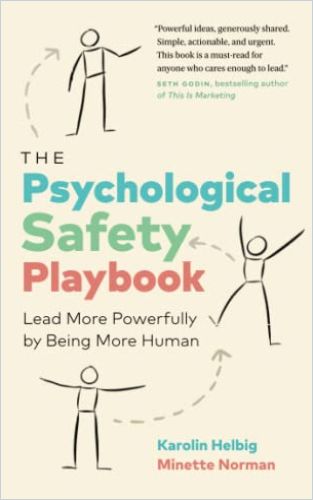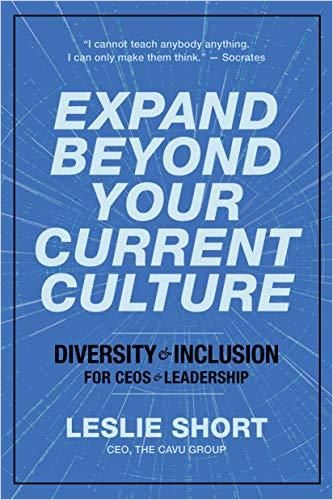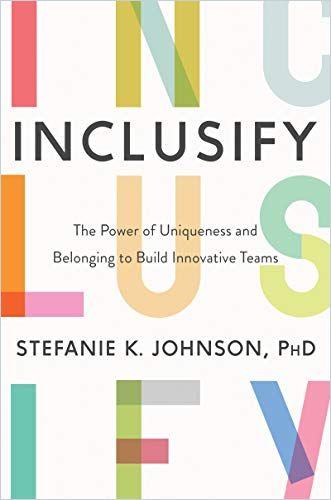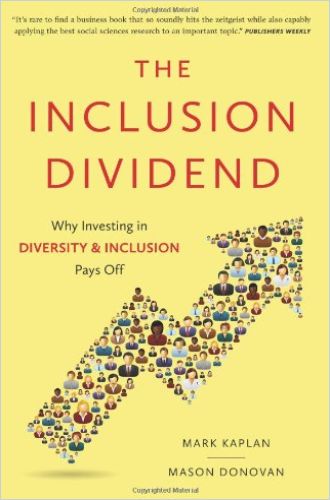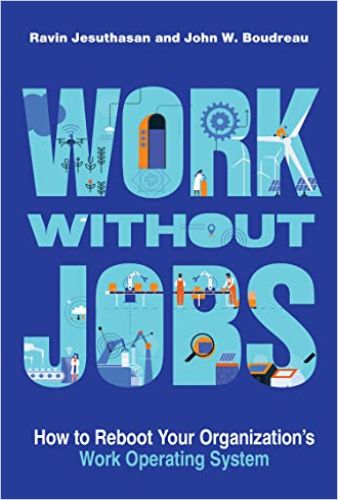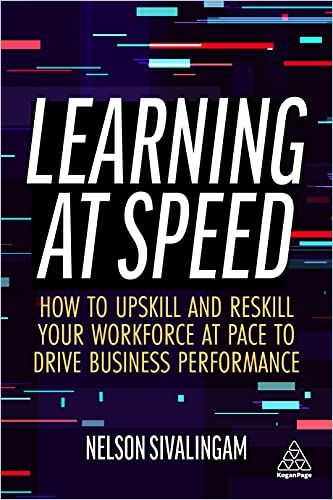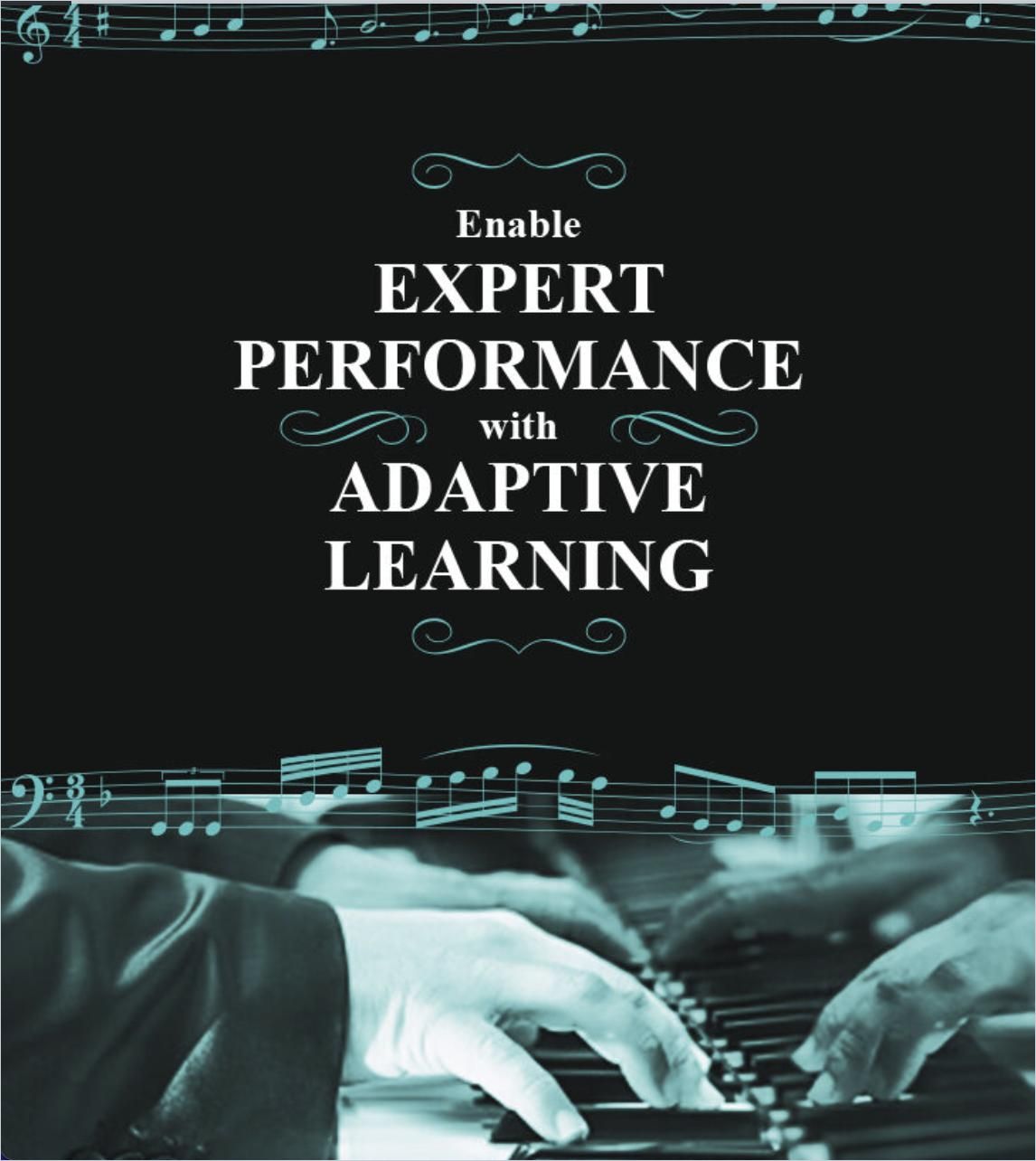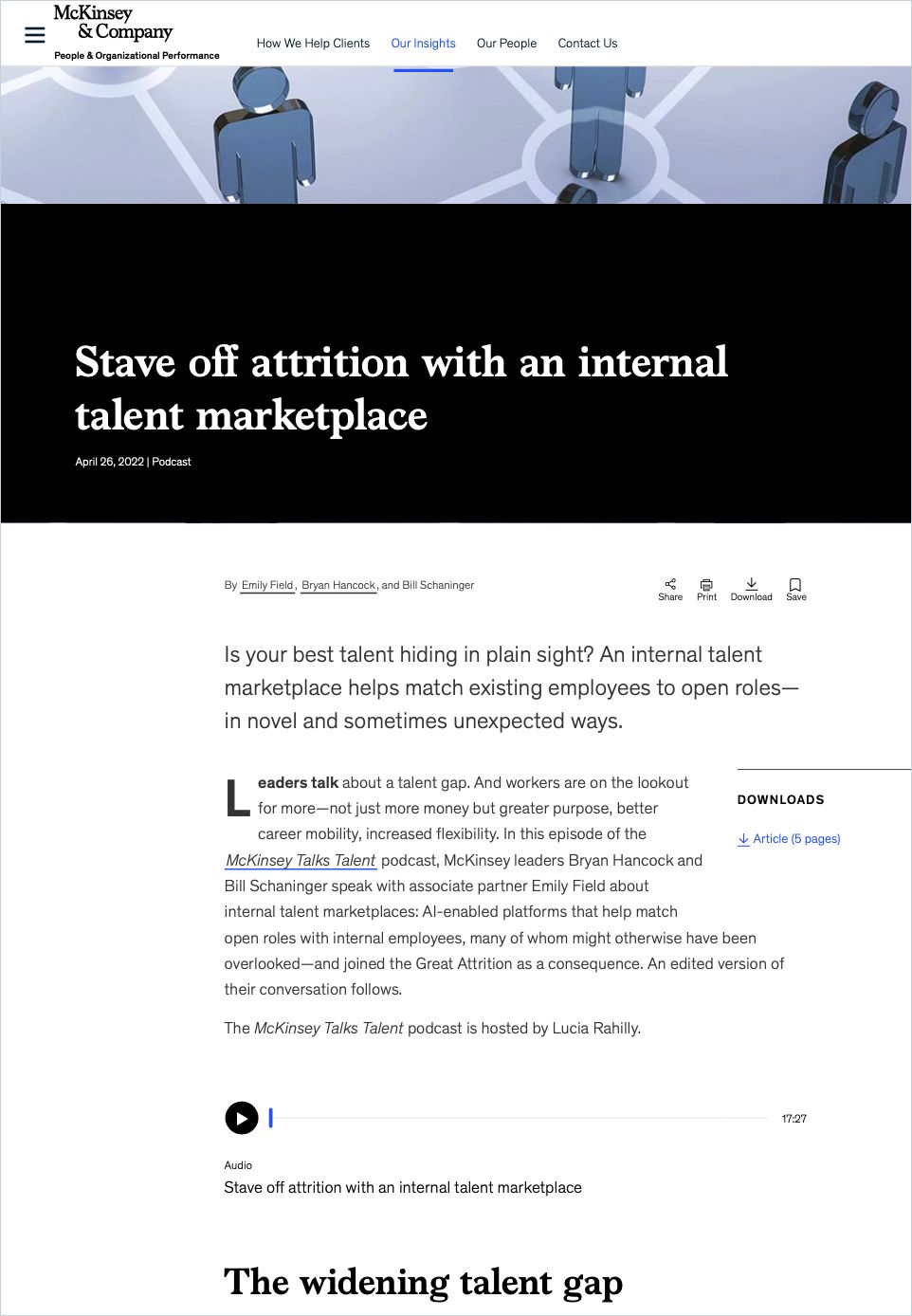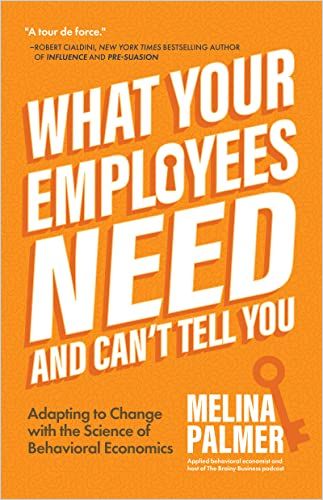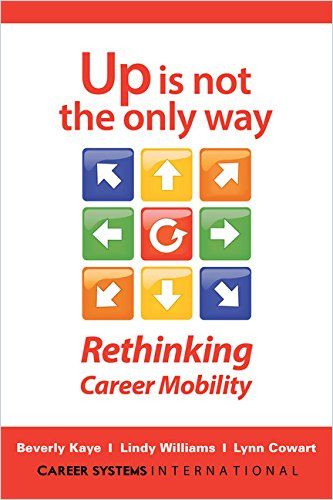L&D and HR Trends 2024

According to Gartner’s annual HR Priorities survey, there are five top priorities for HR leaders in 2024: Leader and Manager Development, Organizational Culture, HR Technologies, Change Management and Career Management and Internal Mobility.
We have examined all five trends and compiled the most important information on how HR and L&D can master these challenges together.
1. Leader and Manager Development
According to Gartner, more than “three-quarters of employees have placed increased importance on manager support while managers juggle 51% more responsibilities than they can handle. The job is no longer manageable.” So, just another leadership training won’t help. What helps:
- Train leaders on delegation, empathy and psychological safety to strengthen personal responsibility and shared tasks.
- Critical thinking is becoming an indispensable leadership and manager qualification in AI-powered working environments.
- Empower (new) leaders to empower their teammates through coaching and mentoring.
- Learn about change enablement and change resistance.
- Focus on talent agility to ensure leaders and their subordinates are in the right place according to their abilities and strengths.
- Implement co-leadership strategies to split duties and attract new personnel.
Learn more about the keystones of leadership development in 2024 here:
2. Organizational Culture
American workers have rarely been happier with their working lives than they are today. This is mainly due to the fact that the work-life balance in hybrid or virtual setups allows for more flexibility and better collaboration. If getAbstract CEO Thomas Bergen has his way, this will remain the case in 2024 and beyond. He recently said in Newsweek:
Employees are more likely to stay at an organization where they feel heard and valued. Companies implementing a mandatory office presence will face a severe talent shortage as employees have voiced they value the flexibility of remote work.
Thomas Bergen, CEO getAbstract
However, one of the few downsides of this new world of work is that the organizational culture suffers from physical fragmentation: Informal meetings and conversations have become very rare, the personal is lost in the well-paced daily meeting marathon – and people are also losing sight of the big picture.
To counteract this, you should:
- Create an open and inclusive working environment in which all employees are heard and valued. Empower them to speak up and raise red flags.
- Define your company’s values and goals and communicate them regularly to your employees.
- Encourage your employees to give feedback and make suggestions to improve the company culture. Make sure that making and learning from mistakes is part of it, and that especially managers understand that “admitting mistakes and showing vulnerability is as much a part of a culture of trust as transparency and openness in communication,” as Thomas puts it.
- Ensure that your managers act as role models for the company culture: They must not leave their people alone, especially when they work remotely.
- ERGs are a powerful thing when it comes to strengthening self-responsibility and accountability, and fostering employee engagement.
- Use technology to facilitate collaboration and information sharing between employees (s. below).
3. HR and L&D Technologies
New technological innovations are changing the way we work and how we organize work. Not only are new occupational fields emerging, but hybrid and remote work are becoming increasingly important and are here to stay. Work processes are being automated, and employees must acquire new skills to keep pace with change.

To stay relevant, both companies and employees should learn to invest in soft (and essentially human) skills. Here are our main take-aways:
- Invest in training your employees to ensure they have the skills to keep up with changing work processes. Consider the generational gap when it comes to digital, and don’t underestimate bringing your human to work.
- Monitor and measure motivation and engagement, but don’t overestimate both. Focus on learning and applying outcomes.
- Get familiar with the latest digital learning opportunities and stay up to date with what’s happening in the areas of Adaptive Learning, Intelligent Tutoring Systems (ITS), talent management platforms and gamification.
- Consider the impact of bite-sized learning and dwindling attention spans on your pursuit of profound upskilling experiences.
- Encourage your employees to train in soft skills such as communication, collaboration and problem-solving.
- Make sure your people have the tools and resources they need to do their jobs effectively remotely. Try not to overwhelm them. And don’t overestimate AI solutions yet.
- Use technology to facilitate collaboration and information sharing between employees. Avoid two-class systems in hybrid setups.
If you want to dive into greater detail, check the following summaries:
The role of AI will play a particular part in 2024, says Patrick Brigger, COO of getAbstract: “A critical shift is taking place in L&D departments, where the focus is moving from pure content production to curation. This transition is supported by intelligent systems that facilitate curation and training together with learning experts.”
Public AI chatbots, which use the internet as their primary resource, are foreseeably unsuitable in the learning sector, as the majority of content there will soon be generated by AI – leading to dangerous false feedback loops.
The trend is, therefore, towards smaller ‘internal’ LLMs trained for specific learning purposes. Of course, this requires access to reliable knowledge bases of trustworthy and thematically accurate content.
Patrick Brigger, getAbstract COO
In the following articles, you’ll find the necessary inputs and updates:
4. Change Management
“While everybody talks about innovation, business leaders and entrepreneurs tend to get false positives from the market about people’s willingness to change. They sometimes ignore the difference between desiring change and desiring the process of changing. There are likely many people who are excited by the outcome of what change means but are relunctant to go through the journey to get there,” explains David Schonthal, author of The Human Element in a 2023 getAbstract interview. And he adds:
People resist embracing new things for four fundamental reasons: inertia, effort, emotion and reactance.
In addition, explains Schonthal, persuasion doesn’t work, but empowerment does. Here are the most important inputs when it comes to initiating, supporting and concluding change processes:
- The powerful tools in dealing with change are empathy, a decent knowledge management and a focus on closing the knowledge-action gap.
- Strengthen general courage and practice candor.
- Ensure calm, transparent, compassionate and compelling communication.
- When it comes to digital transformation, make sure you act strategically and follow your roadmap. If something is not broke, this doesn’t mean you shouldn’t fix it.
5. Career Management and Internal Mobility
According to Gartner, “traditional career maps no longer fulfill business requirements or employee expectations.” Instead, they leave employees unsure how to move forward in their careers. As the last few years have shown with all their reallocations of manpower, many HR and L&D departments were and are overwhelmed by the new demands of their employees:
86% of HR leaders believe career paths at their organizations are unclear for many employees.
Gartner
Since important priorities such as talent allocation, retention and motivation are closely linked to this, the following advice is not just well-intentioned but imperative:
- Career paths are no longer predictable in the long term, which is why they need to be constantly adapted. Pay close attention to providing knowledge and training around future skills to engage employees in reskilling and staying up-to-date.
- Careers should be planned and developed together with employees. The keyword here is job crafting. Remember: good people always make careers in times of talent shortages. The only question is whether it’s with you or your competitors.
- Make room to see where employees can and should contribute previously hidden talents. 360° feedback helps to uncover hidden opportunities or skill gaps.
- No longer just focus on job descriptions and titles but on roles and capabilities.
- Internal project and talent marketplaces are simple ways to deploy talents more precisely.
- You will not only find hidden talent among the active workforce – but also among former employees. If you want to utilize this potential, you need to put aside prejudices and maintain good contact with former or retired employees.
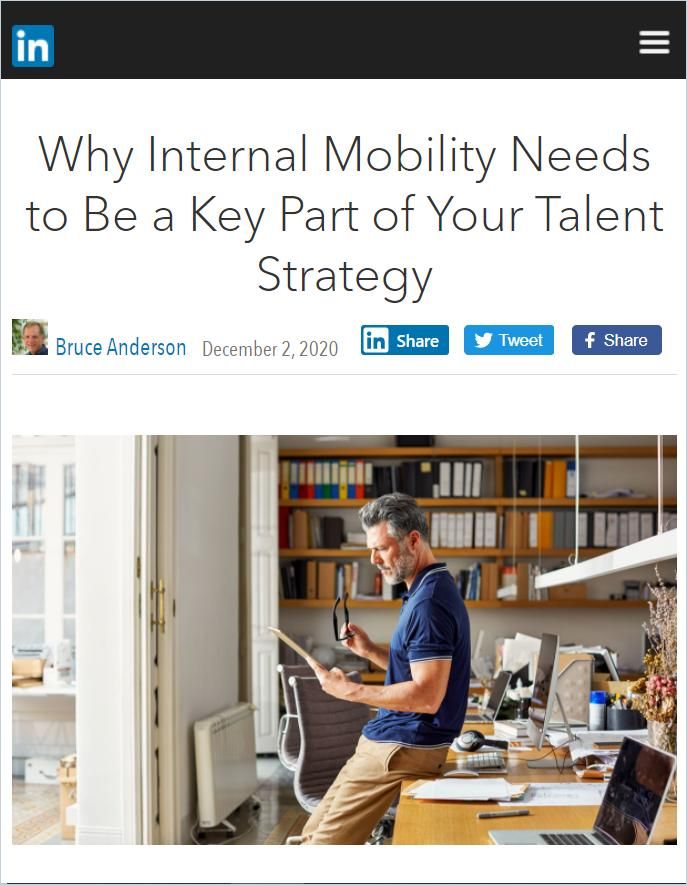
Why Internal Mobility Needs to Be Part of Your Talent Strategy
LinkedIn Read SummaryThe following articles get you started with hands-on advice:



